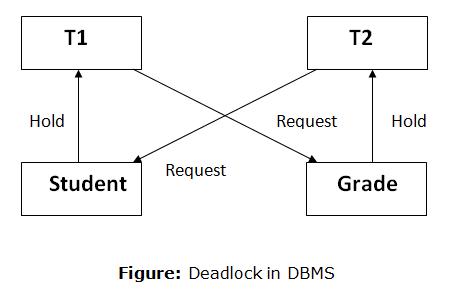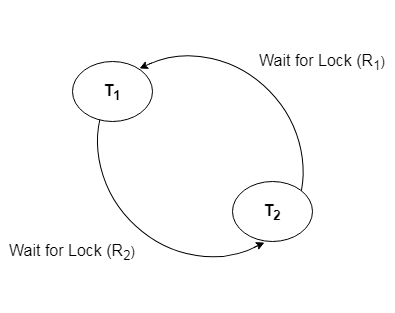-
DBMS Tutorial
- dbms-tutorial
- what-is-database
- types-of-databases
- what-is-rdbms
- dbms-vs-rdbms
- dbms-vs-file-system
- dbms-architecture
- three-schema-architecture
- data-models
- data-model-schema
- data-independence
- dbms-language
- acid-properties-in-dbms
Data modeling
- er-model-concept
- notation-for-er-diagram
- er-design-issues
- mapping-constraints
- dbms-keys
- dbms-generalization
- dbms-specialization
- dbms-aggregation
- convert-er-into-table
- relationship-of-higher-degree
Relational data Model
- relational-model-concept
- relational-algebra
- join-operation
- integrity-constraints
- relational-calculus
Normalization
- functional-dependency
- inference-rule
- dbms-normalization
- dbms-1nf
- dbms-2nf
- dbms-3nf
- dbms-bcnf
- dbms-4nf
- dbms-5nf
- relational-decomposition
- multivalued-dependency
- join-dependency
- inclusion-dependence
- canonical-cover
Transaction Processing
- transaction
- transaction-property
- states-of-transaction
- dbms-schedule
- testing-of-serializability
- conflict-schedule
- view-serializability
- recoverability-of-schedule
- failure-classification
- log-based-recovery
- dbms-checkpoint
- deadlock-in-dbms
Concurrency Control
- concurrency-control
- lock-based-protocol
- time-stamping-protocol
- validation-based-protocol
- thomas-write-rule
- multiple-granularity
- recovery-concurrent-transaction
File organization
- file-organization
- sequential-file-organization
- heap-file-organization
- hash-file-organization
- b+-file-organization
- dbms-isam
- cluster-file-organization
Indexing and B+ Tree
Hashing
RAID
Misc
- decomposition-algorithms
- storage-system-in-dbms
- data-dictionary-storage
- file-organization-storage
- selection-of-raid-levels
- bitmap-indexing
- buffer-replacement-strategies
- database-buffer
- estimating-query-cost
- query-processing-in-dbms
- evaluation-of-expressions
- external-sort-merge-algorithm
- hash-join-algorithm
- materialization-in-query-processing
- merge-join-algorithm
- nested-loop-join-algorithm
- selection-operation-in-query-processing
- double-pipelined-join-algorithm
- implementation-of-pipelining
- pipelining-in-query-processing
- advanced-query-optimization
- transforming-relational-expressions
- candidate-key
- closure-of-an-attribute
- questions-on-boyce-codd-normal-form
- questions-on-normalization
- questions-on-third-normal-form
- equivalence-of-functional-dependency
- referential-integrity-constraint
- questions-on-lossy-and-lossless-decomposition
- lossy-or-lossless-decomposition-(second-method)
- questions-to-identify-normal-form
- types-of-relationship-in-database-table
- candidate-key-in-dbms
- primary-key-in-dbms
- super-key-in-dbms
- alternate-key-in-dbms
- composite-key-in-dbms
- foreign-key-in-dbms
- surrogate-key-in-dbms
- unique-key-in-dbms
- purpose-of-normalization
- commit-vs-rollback-in-sql
- ddl-vs-dml
- denormalization-in-databases
- er-model-vs-relational-model
SQL Introduction
- sql-introduction
- characteristics-of-sql
- advantage-of-sql
- sql-datatype
- sql-command
- sql-operator
- sql-table
- sql-select-statement
- sql-insert-statement
- sql-update-statement
- sql-delete-statement
- sql-view
- sql-index
- sql-sub-queries
- sql-clauses
- sql-aggregate-function
- sql-join
- sql-set-operation
DBMS MCQ
Interview Questions
Deadlock in DBMSA deadlock is a condition where two or more transactions are waiting indefinitely for one another to give up locks. Deadlock is said to be one of the most feared complications in DBMS as no task ever gets finished and is in waiting state forever. For example: In the student table, transaction T1 holds a lock on some rows and needs to update some rows in the grade table. Simultaneously, transaction T2 holds locks on some rows in the grade table and needs to update the rows in the Student table held by Transaction T1. Now, the main problem arises. Now Transaction T1 is waiting for T2 to release its lock and similarly, transaction T2 is waiting for T1 to release its lock. All activities come to a halt state and remain at a standstill. It will remain in a standstill until the DBMS detects the deadlock and aborts one of the transactions.  Deadlock Avoidance
Deadlock DetectionIn a database, when a transaction waits indefinitely to obtain a lock, then the DBMS should detect whether the transaction is involved in a deadlock or not. The lock manager maintains a Wait for the graph to detect the deadlock cycle in the database. Wait for Graph
The wait for a graph for the above scenario is shown below:  Deadlock Prevention
Wait-Die schemeIn this scheme, if a transaction requests for a resource which is already held with a conflicting lock by another transaction then the DBMS simply checks the timestamp of both transactions. It allows the older transaction to wait until the resource is available for execution. Let's assume there are two transactions Ti and Tj and let TS(T) is a timestamp of any transaction T. If T2 holds a lock by some other transaction and T1 is requesting for resources held by T2 then the following actions are performed by DBMS:
Wound wait scheme
Next TopicDBMS Concurrency Control
|